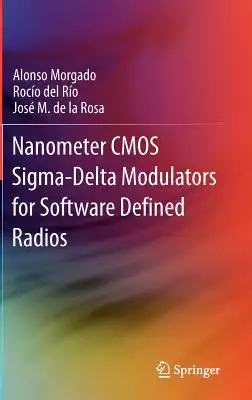Telecom circuit的問題,透過圖書和論文來找解法和答案更準確安心。 我們找到下列免費下載的地點或者是各式教學
Telecom circuit的問題,我們搜遍了碩博士論文和台灣出版的書籍,推薦Liu, Leibo/ Wang, Bo/ Wei, Shaojun寫的 Ke Chong Gou Ji Suan Mi Ma Chu Li Qi 和Morgado, Alonso/ Del Rio, Rocio/ De LA Rosa, Jose M.的 Nanometer CMOS Sigma-Delta Modulators for Software Defined Radio都 可以從中找到所需的評價。
這兩本書分別來自 和所出版 。
國立清華大學 電機工程學系 廖聰明所指導 盧旻澤的 具可重組能源支撐機構以開關式磁阻發電機為主之直流微電網 (2021),提出Telecom circuit關鍵因素是什麼,來自於開關式磁阻電機、風力發電機、太陽光伏、直流微電網、超電容、電池、飛輪、單相三線變頻器、插入式機構、切換式整流器、可重組架構、換相移位、位置估測、電壓控制、電流控制、強健控制、前饋控制、車輛至微電網、微電網至車輛。
而第二篇論文淡江大學 經營管理全英語碩士學位學程 李培齊所指導 林艾瑪的 2019新冠狀病毒與數字化:冠狀病毒如何影像到數字化 (2021),提出因為有 數字化、冠狀病毒、物聯網的重點而找出了 Telecom circuit的解答。
Ke Chong Gou Ji Suan Mi Ma Chu Li Qi

為了解決Telecom circuit 的問題,作者Liu, Leibo/ Wang, Bo/ Wei, Shaojun 這樣論述:
Dr. Leibo Liu is a tenured associate professor at the Institute of Microelectronics, Tsinghua University, Beijing, China. He received his Ph.D. degree from the Institute of Microelectronics at Tsinghua University in 2004. His research focuses on reconfigurable computing, very large-scale integration
(VLSI) design methodology, and cryptographic processor/computer vision/communication baseband chip design. He has published more than 160 peer-reviewed papers and 2 books. He also holds more than 70 patents. His research achievements have already been transferred to the integrated circuit (IC) indu
stry and applied to numerous commercial products, such as crypto-processors, programmable logic devices, and wearable computing processors. He has received several important prizes such as the National 2nd Prize for Technological Invention, the Chinese patent "Golden Award," and the "Technological I
nvention award from the Ministry of Education".Bo Wang received her B.S. degree in Microelectronics from Jilin University, China, in 2012. Currently, she is pursuing her Ph.D. degree in Electronic Engineering at Tsinghua University. Her current research interests include very large-scale integration
(VLSI) design, reconfigurable computing and design methods for hardware security.Prof. Shaojun Wei is the director of the Institute of Microelectronics, Tsinghua University, Beijing, China. He received his M.E. degree from the Department of Radio and Electronics, Tsinghua University in 1984 and Ph.D
. degree in Applied Science in 1991 from the Faculté Polytechnique de Mons (FPMs), Belgium and then became an assistant professor at FPMs. From 1998 to 2005, he worked for Datang Telecom Technology Co., Ltd. successively as vice-president, president & CEO. He was the founder, president & CEO and cha
irman of the board of Datang Microelectronics Technology Co., Ltd. from 1996 to 2005. He was the CTO of Datang Telecom Industry Group from 2005 to 2006. Prof. Wei is a member of the National IC Industry Advisory Committee, the vice president of CSIA and president of the VLSI fabless chapter. He is a
fellow of the CIE and a senior member of the IEEE. Prof. Wei’s research interests include very large-scale integration (VLSI) design methodology, mobile computing, and reconfigurable computing, and he has published more than 190 papers in these areas. He has received numerous awards, including the
National 2nd Prize for Advanced Technology in 2002; the National 2nd Prize for Technology Invention in 2015; and the Award for Outstanding Chinese Patented Invention from the State Intellectual Property Office of China & World Intellectual Property Organization in 2004 and 2015.
具可重組能源支撐機構以開關式磁阻發電機為主之直流微電網
為了解決Telecom circuit 的問題,作者盧旻澤 這樣論述:
本論文旨在開發一具可重組能源支撐機構以風力開關式磁阻發電機為主之直流微電網。首先建立一變頻感應馬達驅動之開關式磁阻發電機及其後接非對稱橋式轉換器,採磁滯電流控制以具快速電流追控性能,且經量化設計之電壓控制器,獲得調節良好之48伏直流標稱輸出電壓。為減少開關式磁阻發電機之反電動勢影響,提出考慮最大可操作功率之換相移位策略,可正常操作於廣速度及負載範圍。另外,再提出一些增能探究,包含:(i) 換相移位對直流鏈電壓漣波之影響,可間接降低發電機之產生轉矩漣波;(ii) 發電機之轉子位置估測,包含換相時刻及窗角設定;以及(iii) 單一相斷路之發電容錯能力。為建立微電網共同直流匯流排電壓(400V),
建構一交錯式直流-直流昇壓轉換器。除良好設計之電流及電壓回授控制器外,加入一輸入電壓前饋控制器,於風力發電機輸出電壓變動下,增快電壓之調節響應速度。為增進微電網之供應可靠性,安裝一包含超電容、電池及開關式磁阻馬達驅動飛輪之混合儲能系統。並裝配一基於維也納切換式整流器之插入式能源支撐機構,以接收可取得之直流、單相及三相交流電源。當風能不足時,微電網可藉此安排,在直流匯流排獲得能源支援。接著,提出一可重組之交錯式昇壓介面轉換器。藉於不同並接轉換器數量進行之穩態特性量測,建立一依速度切換並接數量之交錯式昇壓轉換器,可在廣速度範圍下保有高能源轉換效率。於低風速,甚至風渦輪機停機時,交錯式轉換器可重組,
以擷取輸入外部電源。此外,為拓展所建直流微電網之能源輸入多樣性,再經所開發之交錯式轉換器建立太陽光伏系統。在微電網之測試負載安排上,採用單相三線負載變頻器模擬家用負載。另外,本論文亦從事所建微電網與電動車開關式磁阻馬達驅動系統之互聯雙向操作。所有所建電力電路均以模擬及量測結果驗證評估之。
Nanometer CMOS Sigma-Delta Modulators for Software Defined Radio

為了解決Telecom circuit 的問題,作者Morgado, Alonso/ Del Rio, Rocio/ De LA Rosa, Jose M. 這樣論述:
This book presents innovative solutions for the implementation of Sigma-Delta Modulation (SDM) based Analog-to-Digital Conversion (ADC), required for the next generation of wireless hand-held terminals. These devices will be based on the so-called multi-standard transceiver chipsets, integrated in
nanometer CMOS technologies. One of the most challenging and critical parts in such transceivers is the analog-digital interface, because of the assorted signal bandwidths and dynamic ranges that can be required to handle the A/D conversion for several operation modes.This book describes new adaptiv
e and reconfigurable SDM ADC topologies, circuit strategies and synthesis methods, specially suited for multi-standard wireless telecom systems and future Software-defined-radios (SDRs) integrated in nanoscale CMOS. It is a practical book, going from basic concepts to the frontiers of SDM architectu
res and circuit implementations, which are explained in a didactical and systematic way. It gives a comprehensive overview of the state-of-the-art performance, challenges and practical solutions, providing the necessary insight to implement successful design, through an efficient design and synthesi
s methodology. Readers will learn a number of practical skills - from system-level design to experimental measurements and testing.
2019新冠狀病毒與數字化:冠狀病毒如何影像到數字化
為了解決Telecom circuit 的問題,作者林艾瑪 這樣論述:
當初在中國被發覺的2019新冠狀病毒快速變成大流行震撼了全球,而從中國通過數字化技術應對疫情的方式能取得導向。中國疫情管理路子為了達到各類目標而戳力利用各數字科技:當然包括密切接觸人組蹤跡而用機器人緩解醫療系統負擔等為成功抗病。不過還利用許多數位技術幫助公民轉入正常生活習慣同時避免疫情重新爆發、通過物聯網支持行銷現代化以及智能生態系統創新。因此中國案例能夠作為全球的一個導向來想像數字技術的的角色, 和數字化未來會創造怎樣的世界。